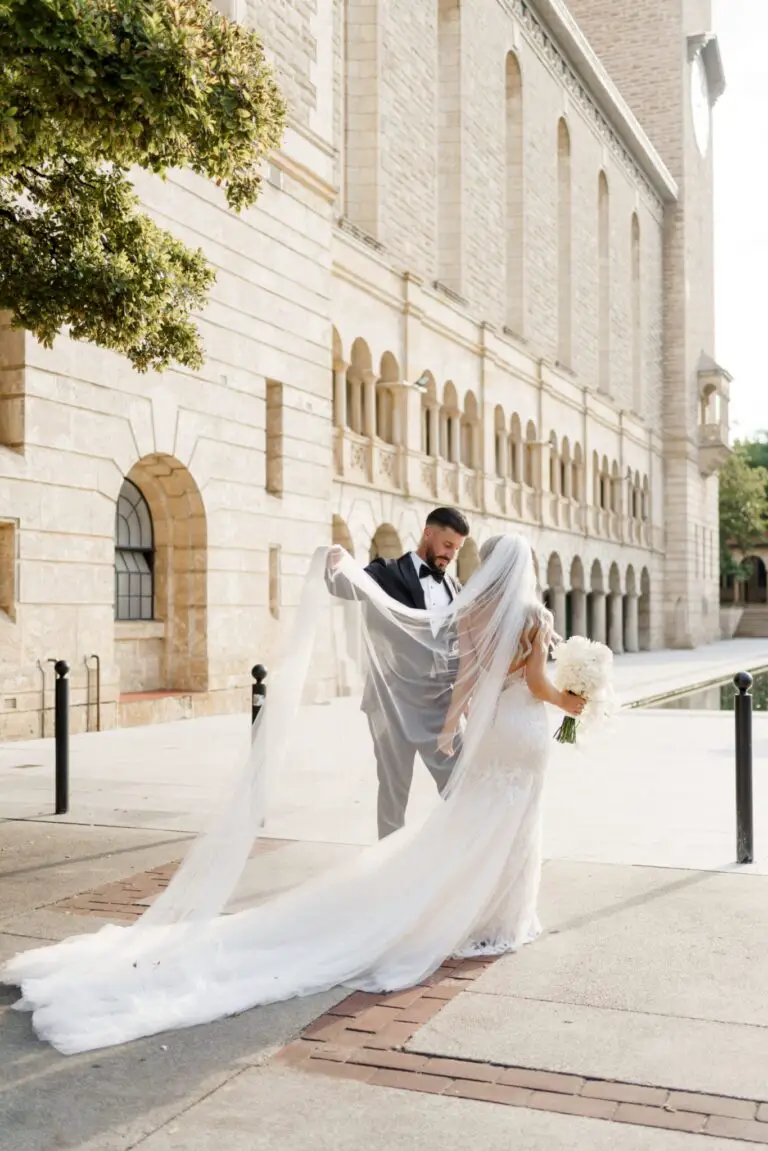Cultural Wedding Traditions Making A Comeback In 2024
As wedding traditions evolve, 2024 marks a revival of cultural customs that blend modernity with heritage. This resurgence is driven by an increasingly interconnected global community, where couples are embracing their roots and creating unique celebrations. Let’s delve into the enchanting customs making a heartfelt comeback.
The handfasting ceremony, for instance, ties the knot in a literal sense.
The vibrant Haldi ceremony precedes Indian weddings with a golden glow, while the Chinese Tea Ceremony honors ancestry and family. The Jewish Huppah provides shelter and protection, and the Polish Bread and Salt Blessing offers a taste of prosperity and longevity.
In Nigeria, the Aso-ebi weaves together unity and community, while Japan’s San-san-kudo ceremony is a toast to togetherness.
Scotland’s Quaich Ceremony raises a glass to unity, showcasing the rich cultural heritage that couples are incorporating into their celebrations.
Handfasting Ceremonies: Tying the Knot, Literally

In ancient Celtic traditions, handfasting emerged as a symbolic representation of unity between two people. This enchanting ritual involves literally binding the couple’s hands together with ribbons or cords, giving rise to the phrase ‘tying the knot.’ As an homage to its historical roots, handfasting has experienced a revival in modern times, allowing couples to infuse their ceremonies with personal and cultural significance.
The Vibrant Haldi Ceremony: A Golden Prelude to Indian Weddings

In Indian weddings, a pre-union ritual known as the Haldi ceremony is gaining popularity among modern couples. This age-old tradition involves applying a unique paste made from turmeric, yogurt, and sandalwood to the bride and groom’s skin. The resulting vibrant yellow hue not only adds a touch of warmth to their complexions but also symbolizes good fortune and prosperity, as believed by many.
A far cry from the traditional solemnity often associated with pre-wedding rituals, the Haldi ceremony is now a joyous and interactive celebration that allows couples to share in its festivities with friends and family.
Chinese Tea Ceremony: Honoring Ancestry and Family

In Chinese culture, the traditional tea ceremony is deeply rooted in the values of filial piety and respect for elders. The ritual, where young couples serve tea to their elders as a symbol of gratitude and humility, has gained renewed popularity among modern couples seeking to reconnect with their cultural heritage. As a meaningful way to honor their ancestors, the tea ceremony serves as a powerful expression of respect and appreciation, fostering a sense of community and connection.
Jewish Huppah: Embracing Shelter and Protection

The Jewish Huppah, an iconic canopy that shelters newlyweds on their wedding day, is more than just a decorative element – it’s a tangible representation of the couple’s future life together. This ancient tradition has experienced a resurgence in popularity as couples seek to infuse their special day with deeper meaning and personal significance.
As they exchange vows beneath its elegant curves, the Huppah serves as a potent symbol of the home they’ll build, the memories they’ll create, and the love that will be the foundation of their lives.
Polish Bread and Salt Blessing: A Taste of Prosperity and Longevity

In Poland, a centuries-old custom has seen a resurgence in popularity, as parents welcome newlyweds with bread and salt. The humble loaf serves as a poignant reminder that the couple’s marriage will be filled with abundance, while the sprinkle of salt acknowledges that even in times of plenty, life’s challenges can arise.
This endearing tradition not only symbolizes the community’s hopes for the couple’s prosperity but also underscores the importance of perseverance and resilience in the face of adversity.
Nigerian Aso-ebi: A Tapestry of Unity and Community

In Nigeria, the tradition of donning matching fabrics at weddings, known as Aso-ebi, extends far beyond mere aesthetics. This custom holds profound significance, serving as a powerful symbol of unity and collective identity among loved ones. As the Nigerian diaspora continues to flourish, couples from afar are thoughtfully incorporating this beloved practice into their special days, beautifully weaving together threads of cultural heritage and community.
Japanese San-san-kudo: Sipping for the Soul

In Japan, a sacred tradition has been revived: San-san-kudo. This ancient ritual is a poignant expression of devotion and commitment between two people. As part of this ceremony, the couple takes three deliberate sips each from three distinct sake cups, an act that represents the strengthening of their bond and the unbreakable ties that connect them. For couples seeking to honor their cultural heritage and create meaningful memories, San-san-kudo is a powerful symbol of love and unity.
Scottish Quaich Ceremony: Toast to Togetherness

As couples prepare to exchange vows, they’re not just planning a ceremony – they’re crafting a narrative that honors their heritage and identity. The Quaich, a traditional Scottish cup with two handles, embodies the spirit of sharing and unity between partners. By drinking from this symbolic vessel, couples toast trust, respect, and shared values, forging an unbreakable bond. This ancient custom is gaining popularity among modern couples seeking to infuse their union with cultural significance.
In today’s world where individuality thrives, these timeless traditions offer a unique way to express personal taste while remaining deeply connected to one’s roots. As we witness the resurgence of cultural customs, we’re reminded of the rich tapestry that binds us together – a delicate balance of love, respect, and community. Whether it’s the Quaich or other cherished rituals, these symbols serve as a testament to the enduring power of tradition in modern relationships.






